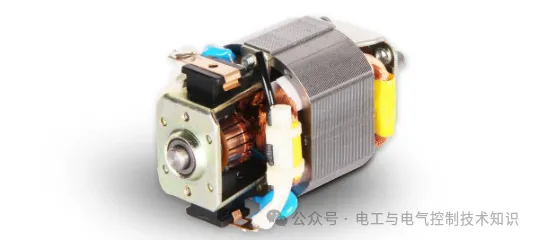What are the advantages and disadvantages of induction motors and series motors?
What are the advantages and disadvantages of induction motors and series motors? What is the difference between the two?
Motors can provide power for many devices, which shows that motors must have enough application scenarios in real life. In order to enhance everyone's understanding of motors, this article will introduce the advantages and disadvantages of induction motors and series motors, and the differences between induction motors and series motors.
1. Advantages and disadvantages of induction motors and series motors
(I) Advantages and disadvantages of induction motors
An induction motor, also known as an "asynchronous motor", is a device that places a rotor in a rotating magnetic field and obtains a torque under the action of the rotating magnetic field, so that the rotor rotates. The rotor is a rotatable conductor, usually in a squirrel cage shape. It was invented by electrical engineer Nikola Tesla in 1887. The entry introduces the concept, inventor, working principle, basic structure, working mode, braking mode, asynchronous characteristics, specifications and fault inspection of induction motors.
Induction motors and series motors are both common AC motors, and they each have their own advantages and disadvantages.
Advantages of induction motors include:
Simple structure and high reliability: The induction motor has a simple structure and does not have the complex commutation mechanism and brushes of the DC motor, so the motor failure rate can be reduced.
Small size and light weight: Induction motors are usually smaller in size and weight than series motors and can be easily integrated into other equipment.
Energy saving and environmental protection: Induction motors have high efficiency and low loss, can effectively save energy, and do not require the use of carbon brushes containing harmful substances, which meets environmental protection requirements.
The disadvantages of induction motors include:
Poor starting performance: The induction motor needs certain auxiliary equipment to start, such as starting capacitors or transformers, and the speed is unstable after starting, which needs to be stabilized by adjusting the power frequency or reducing the load.
Difficulty in speed regulation: The speed of the induction motor is determined by the power supply frequency, so speed regulation is relatively difficult.
Not suitable for high-speed operation: The speed range of induction motors is relatively narrow and is not suitable for high-speed operation because it is prone to overheating, wear and other problems when running at high speeds.
(II) Advantages and disadvantages of series motor
Single-phase series motors are commonly known as series motors or universal motors (Universal Motors are called in foreign countries) because the armature winding and the excitation winding are connected in series to work together. Single-phase series motors are AC and DC dual-purpose motors, which can work with both AC and DC power supplies.
The advantages of series motors include:
Wide speed range: The speed range of the series motor is relatively wide and can meet various speed requirements, including high-speed operation.
Easy speed regulation: The speed of the series-excited motor can be regulated by adjusting the power supply voltage and current, which is relatively convenient.
Good starting performance: The starting performance of the series-excited motor is relatively good, and the speed is stable after starting.
The disadvantages of series motors include:
Complex structure and high maintenance cost: The structure of the series motor is relatively complex and requires regular maintenance and replacement of accessories such as carbon brushes.
Easy to generate electromagnetic interference: Series-excited motors are prone to generate electromagnetic interference when working, which needs to be shielded or suppressed.
Requires DC power supply: The series-excited motor requires a DC power supply, so additional power conversion equipment is required, which is not conducive to integration and use.
2. The difference between induction motor and series motor
Induction motor and series motor are two different types of motors with the following differences between them:
The working principles are different: the induction motor uses a rotating magnetic field to generate an induced current in the rotor to generate torque, while the series motor generates torque by directly transferring current to the coils on the rotor.
Different construction: The rotor of an induction motor is made of aluminum or copper and is not directly connected to an external power source. The rotor of a series motor has coils that are directly connected to an external power source.
Different operating characteristics: The speed of the induction motor is affected by the grid voltage and load size, and the speed is unstable; while the speed of the series-excited motor can be stably adjusted by controlling the current size.
Different scope of use: Induction motors are suitable for high-power and long-term continuous operation occasions, such as pumps, fans, compressors in industrial production, etc.; while series-excited motors are suitable for low-power and precision control occasions, such as power tools, electronic equipment, etc.
Different levels of maintenance difficulty: induction motors have a simple structure, are durable, and are relatively easy to maintain; series motors have a complex structure and are more difficult to maintain, requiring professional personnel to repair them.
Generally speaking, induction motors have the advantages of simple structure and reliable use, and are suitable for high-power and long-term continuous operation occasions; series-excited motors have the advantages of precise control and easy adjustment, and are suitable for low-power and precision control occasions.




























 XINDA
XINDA